One of the best aspects of traveling is experiencing different things. It’s embarking on a journey where the goal is to relax, breathe, appreciate the beauty around you, have delicious meals, and savor fantastic drinks. When I think about my ideal vacation trip, it includes being in a remote area surrounded by nature, enjoying delicious food, and savoring the finest wines. One of my future goals is to have a wine line, and one of my dream vacations is to go on a wine tour around various vineyards in Europe. If you love wine and travel, there’s no better experience than sipping a world-class vintage right at the source. Hence, visiting European vineyards.
Europe, with its centuries-old vineyards, charming towns, and robust wine culture, offers the ultimate wine-lover’s getaway. From sun-drenched Mediterranean coastlines to cool-climate valleys and medieval villages, each region tells a beautiful story in every glass and every cobblestone street. Touring European vineyards invites you to discover their rich history, vibrant culture, and exceptional taste. This post takes you on a journey with me through my dream vacation. Whether you’re a seasoned sommelier or love discovering new varieties while soaking up culture and countryside, here are 12 must-visit European wine destinations, complete with local wine activities that go beyond just tasting. However, before diving into these destinations, let’s take a mini history of European Wineries.
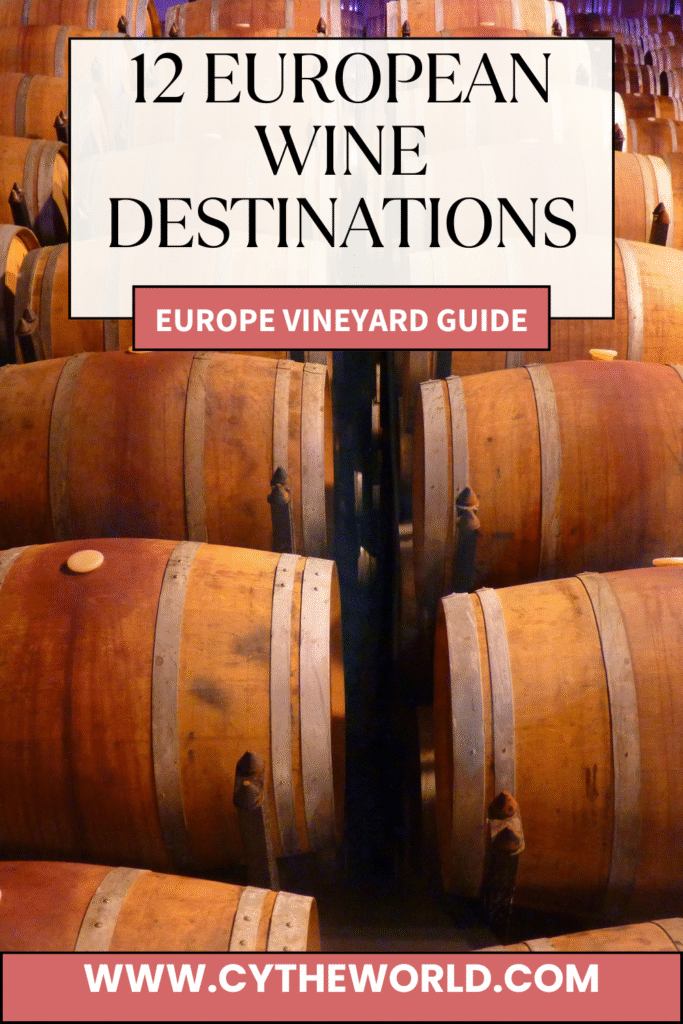
Europe’s Wine History
European wine production boasts a rich and diverse history that dates back thousands of years, intertwining with the continent’s cultural, economic, and social fabric. The origins of wine in Europe can be traced to ancient civilizations, with evidence suggesting wine-making began around 6000 BCE in the regions that are now Georgia and Armenia. The practice gradually spread to the Mediterranean, gaining prominence in countries like Greece and Italy. The ancient Greeks had a profound influence on the wine trade and culture in Europe. As they traveled and settled around the Mediterranean Sea, they established vineyards, refined wine-making techniques, and introduced the concept of wine as a part of social and religious rituals. The Greeks even had a god of wine, Dionysus, underscoring the importance of wine in their civilization.
With the Greeks’ expansions, they carried their wine-making knowledge to other parts of Europe, particularly to Italy, which would eventually become one of the continent’s foremost wine producers. The Romans further advanced the art of wine-making, incorporating it into daily life and trade. They developed advanced vineyard management techniques and introduced the use of terracing and irrigation. By the first century AD, the Romans had established vineyards across their empire, particularly in regions that are now Bordeaux, Burgundy, and the Rhine Valley. Their extensive trade networks facilitated the spread of wine to the farthest reaches of Europe, enhancing its popularity and economic significance. Following the fall of the Roman Empire, the Middle Ages witnessed the Church playing a crucial role in wine production.
Monasteries became centers for viticulture, preserving and enhancing wine-making knowledge. Monks not only cultivated vineyards, but they also produced wine for sacramental purposes. This period laid the groundwork for many of Europe’s most distinguished wine regions, including Bordeaux and Burgundy. The Renaissance brought renewed interest in wine, with an emphasis on quality and refinement. This era marked the emergence of appellation control, laying the groundwork for the modern classification of wines. Over the centuries, the evolution of viticulture and wine-making techniques continued, ultimately leading to the diverse and sophisticated wine landscape we enjoy today in Europe, characterized by its unique terroirs and varied wine styles. Hence, visiting a European winery is more than just about taste. It’s a journey through time, culture, and traditions passed down through centuries of generations. Here are 12 European Wine Destinations that defined the history of winemaking in Europe.
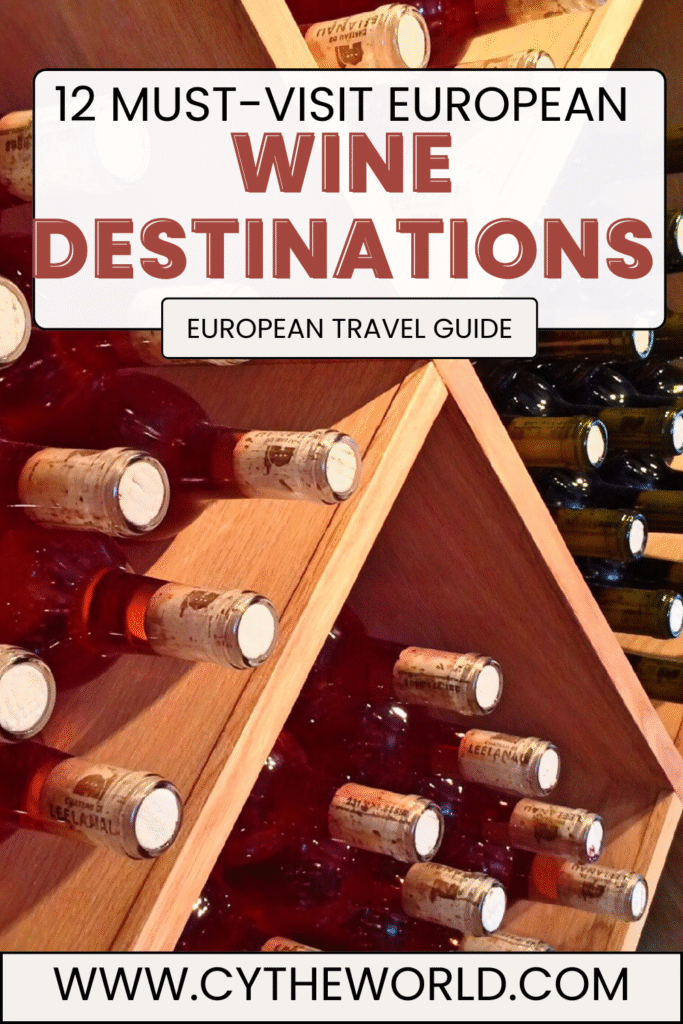
12 European Wine Destinations
- Bordeaux, France – The Grand Dame of Wine Regions
The first European Wine destination that is a must-visit is Bordeaux, France. Wine in Bordeaux is like 5 and 6. The city is synonymous with wine. Known as the wine capital of the world, Bordeaux is a paradise for lovers of bold reds like Cabernet Sauvignon and Merlot. Bordeaux stands as a beacon for wine enthusiasts seeking exquisite experiences in the world of viticulture. The region is renowned for its historical significance, rich terroirs, and exceptional varietals. Its unique combination of climate, soil, and winemaking tradition produces some of the finest wines in the world, making it a must-visit destination for travelers passionate about oenology. Bordeaux vineyards, with their rolling hills and picturesque landscapes, provide immersive wine tours that enlighten visitors about the intricate process from grape to glass.
Located in the Southwest of France, Bordeaux itself carries a legacy and history that spans centuries. With over 2,000 years of history, Bordeaux offers an adventure that takes every traveler on a unique journey. The city provides experiences like the Skull of Goya Escape Games, allowing visitors to explore and engage with the city’s rich history. You can also book a guided tour, like the Bordeaux, Sugar, and Discoveries, where you will discover the city with four stops at different savory merchants, where you will taste the best of Bordeaux sweets. For architecture and music lovers, a trip to the Bordeaux Opera House is a must. This neoclassical architecture is one of the most beautiful theaters in Europe. Another must-visit historical destination in Bordeaux is Porte Cailhau, a defense gate that offers a fantastic panoramic view of the city. Above all the attractions Bordeaux has to offer, its most prominent attraction is its chateaux.
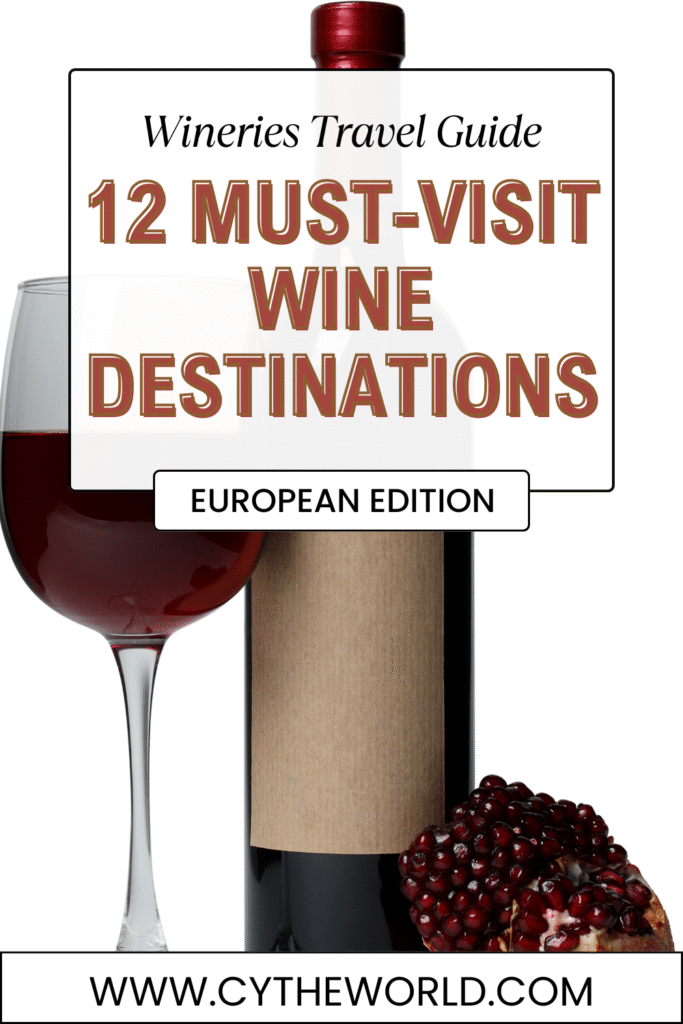
In French, the word “Château” means castle. However, in Bordeaux, a château refers to the winemaking estate, which encompasses the vineyards, wineries, and other buildings that belong to the estate. Bordeaux is home to approximately 7,300 Châteaux, one of the world’s largest wine regions. These chateaux produce about 10,000 different wines. With so many options to choose from, you can spend your whole vacation just exploring these Châteaux. Each tells a unique story that takes you on a different journey in Bordeaux. Bordeaux’s wine estates can be found in other parts of the city. One of the famous wine estates is the Médoc. Wines that come from this region are among the boldest wines in all of Bordeaux. Pauillac, Médoc’s famous wine-producing commune, is home to three of Bordeaux’s five First Growth châteaux: Château Lafite Rothschild, which is going through renovations, Château Latour, and Château Mouton Rothschild. Another region in Bordeaux is Saint-Emilion.
Saint-Émilion is a medieval village with 2000 years of history and a renowned wine destination. In areas such as Saint-Émilion and Médoc, visitors can go on a guided tasting tour to sample premier wines while learning about the nuances of production and aging. You can enjoy an Afternoon Wine Tour, which includes a tasting class, a visit to the Grand Cru Classe Chateau, and fellowship with other tourists. Beyond touring wineries, Bordeaux offers a range of enjoyable activities to enhance a visitor’s experience. A visit to La Cité du Vin, a state-of-the-art wine museum, immerses guests in the world of wine through interactive exhibits and tastings in a futuristic setting. For those seeking a serene experience, a Garonne River cruise offers stunning views of the city and the surrounding vineyards, often accompanied by carefully paired wines to elevate the journey. Ultimately, Bordeaux’s blend of rich history, spectacular wines, and engaging activities creates a captivating destination for travelers seeking to indulge in the art of winemaking and savor the exquisite flavors of the region.
- Champagne, France – Pop the Bubbly
Another French destination to visit for wine lovers is Champagne. Nestled in the heart of northeastern France, Champagne is a haven for wine lovers. It is renowned for its exquisite sparkling wines that captivate connoisseurs and casual drinkers alike. The very name “Champagne” evokes images of celebration, sophistication, and indulgence; however, the allure of this region extends far beyond its famous bubbly drinks. A trip to Champagne is an immersive experience steeped in history, culture, and the art of winemaking, making it an essential destination for anyone passionate about wine. The history of winemaking in Champagne dates back over 2,000 years, with evidence suggesting that the Romans cultivated vineyards in the region. However, it was during the Middle Ages that the region gained prominence for its distinctive wines. Monks, particularly those from the Benedictine order, played a pivotal role in refining the winemaking process, developing techniques that would later lead to the creation of sparkling wine.
The desire for a more refined and sweeter wine often led winemakers to experiment with fermentation methods, resulting in the iconic bubbles that now define Champagne. The region’s unique chalky soil, mild climate, and specific grape varieties—primarily Pinot Noir, Chardonnay, and Pinot Meunier—contribute to the distinctive flavor profile of Champagne. In 1911, the region firmly established its reputation when it was granted Appellation d’Origine Contrôlée (AOC) status, ensuring that only wines produced in this specific area could be legally labeled as Champagne. This legal definition not only protects the winemakers’ heritage but also underscores the prestige associated with the term.
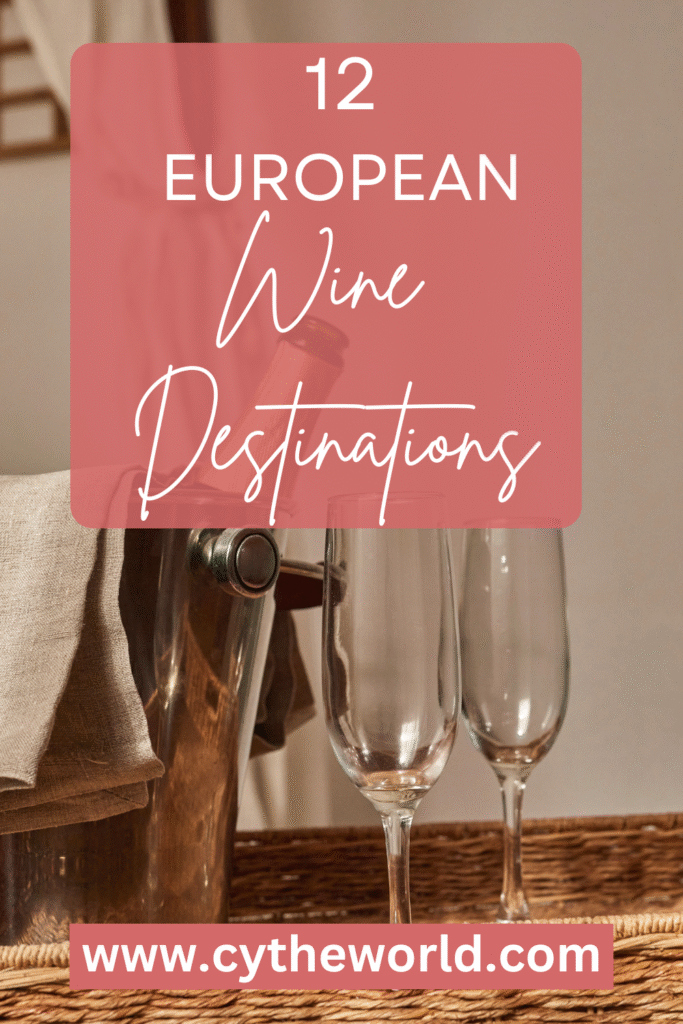
A visit to Champagne would be incomplete without exploring its historic Champagne houses, each with its own unique story and offerings. Notable dwellings, such as those of Moët & Chandon, Veuve Clicquot, and Taittinger, open their doors to visitors, offering fascinating insights into the traditional methods of production. Guided tours often feature breathtaking views of the vineyards, exquisite wine tastings, and engaging narratives about the brand’s rich legacy. At Moët & Chandon, for instance, one can meander through its vast cellars, which stretch over 28 kilometers underground, where millions of bottles are stored under optimal conditions. The tour culminates with a tasting experience that showcases their flagship Champagne, Dom Pérignon, known for its complexity and refinement.
Another must-see during a visit to Champagne is the chalk cellars located beneath the city of Reims, a UNESCO World Heritage site. These subterranean tunnels, originally quarried for chalk, have been repurposed for wine storage and provide a calm, humid environment ideal for aging Champagne. A guided tour of these historic cellars reveals the intricate processes of riddling and disgorging that transform a still wine into the sparkling delight we cherish. One of the most delightful experiences in Champagne is enjoying a gourmet picnic amidst the stunning vineyards. Many Champagne houses, such as Veuve Clicquot, offer specially curated picnic packages complete with local delicacies, including artisanal cheeses, charcuterie, and fresh bread, all paired with a bottle from the estate. Dining al fresco, surrounded by lush vineyards and the gentle sounds of nature, creates a picturesque backdrop that enhances the sensory experience. A journey to Champagne is not just a trip; it’s an experience that captivates the senses and nurtures a profound understanding of winemaking.
- Tuscany, Italy – Vineyards and Villages
Wine enthusiasts who also love Italy should consider adding a trip to the sun-kissed region of Tuscany in central Italy. Renowned not only for its breathtaking landscapes and artistic heritage but also for its rich and storied tradition of winemaking. The rolling hills, dotted with vineyards and charming villages, create a picturesque backdrop for wine lovers eager to explore one of the world’s most acclaimed wine regions. Traveling to Tuscany for a wine tour is more than just a tasting experience; it is an immersion into a culture that celebrates the essence of life through food, wine, and breathtaking vistas. Tuscany’s winemaking history dates back over 2,500 years, with its roots in ancient Etruscan civilization. The Etruscans cultivated grapevines and developed techniques for fermentation practices that would later influence the Romans.
As the Roman Empire expanded, so did the culture of winemaking, spreading viticulture across Europe. However, it was during the Middle Ages and the Renaissance that Tuscany truly shone in the wine industry, with advancements in grape cultivation and winemaking methods. Today, the region is recognized for its classification system that categorizes wines such as Chianti Classico, Vino Nobile di Montepulciano, and Brunello di Montalcino, each with its unique characteristics and terroir. A quintessential experience in Tuscany is touring the Chianti Classico wineries. Many visitors enjoy exploring the scenic vineyards on Vespa or e-bikes, providing a fun and flexible means of traversing the undulating landscape. The Chianti Classico territory is filled with historical estates, where travelers can sample some of the finest wines while soaking in sweeping views of the countryside.
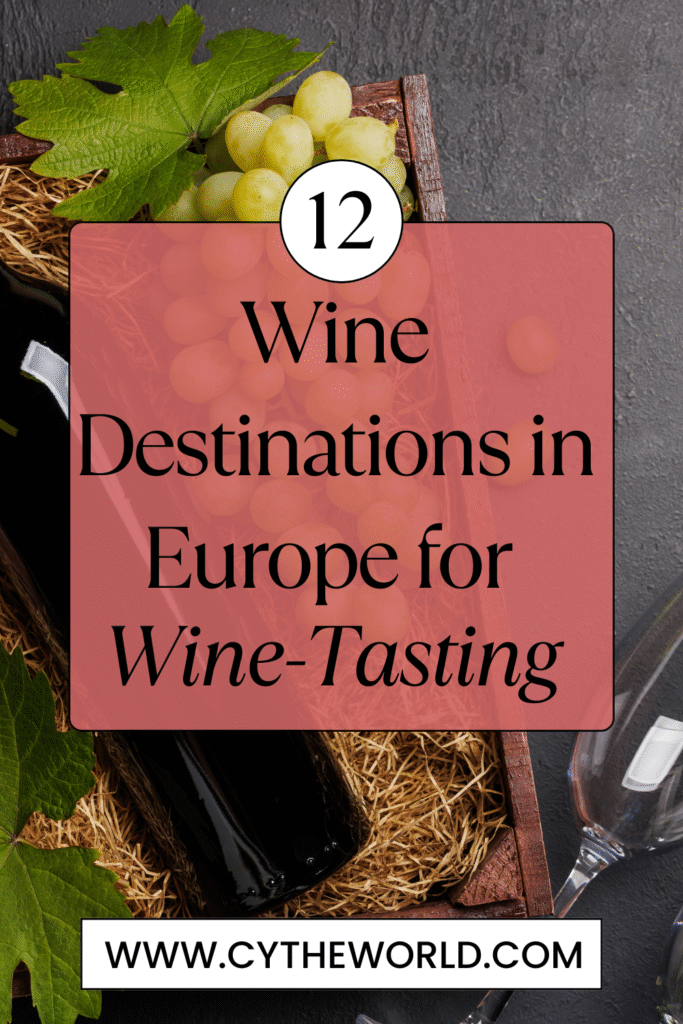
Another immersive activity is participating in a cooking class that is perfectly paired with Tuscan wines. Many agriturismos (farm stays) and culinary schools offer hands-on experiences where visitors learn to prepare traditional Tuscan dishes using fresh, local ingredients. Savoring a homemade meal accompanied by carefully selected wines enhances the experience of Tuscany’s gastronomic heritage. A visit to Montepulciano is essential for those wanting to taste Vino Nobile directly from the barrel. This picturesque hilltop town is famed for its robust red wines produced from Sangiovese grapes. Many wineries offer tours that culminate in tastings within their ancient cellars, allowing visitors to understand the winemaking process while enjoying the rich flavors of the region’s finest offerings.
Beyond wine, Tuscany is steeped in history, with countless medieval towns and Renaissance cities to explore. Places such as San Gimignano, known for its imposing towers, and Pienza, celebrated for its Pecorino cheese, offer a taste of Tuscan culture and charm. Tasting local wines while wandering through these historic streets creates a deeper connection to the fabric of Tuscan life. Time your visit to coincide with one of Tuscany’s many wine festivals, such as the Chianti Classico Wine Festival or the Vino Nobile Wine Festival in Montepulciano. These events celebrate local wines, offering tastings, food pairings, and opportunities to meet passionate vintners. A wine tour in Tuscany is an enchanting journey that intertwines history, flavors, and the stunning beauty of the countryside. From exploring famed vineyards and participating in cooking classes to immersing oneself in the rich traditions of winemaking, the experiences available are as diverse as the wines themselves. Tuscany beckons as a destination where every sip tells a story and each vineyard offers a new adventure.
- Piedmont, Italy – Truffles, Barolo & Barbaresco
Another Italian winemaking playground is Piedmont, Italy. Piedmont is not a city, but rather an Italian region renowned for its mountains, including the Alps, and its rich cultural heritage. Its capital city, Turin, is a UNESCO World Heritage Site. Piedmont is renowned for its exquisite wines and culinary delights, and truffle festivals. The region embodies a sensory feast that captivates visitors from around the globe. Nestled in the foothills of the Alps, the enchanting region is particularly famous for its noble Nebbiolo grape, which gives birth to the celebrated Barolo and Barbaresco wines. The winemaking history in Piedmont is rich and storied, with roots tracing back to ancient Roman times when wine production was already an integral part of the local culture. The Nebbiolo grape thrives in the diverse microclimates of Piedmont, influenced by both the mountains and the fertile plains.
The region boasts a unique combination of soil types, climates, and altitudes that contribute to the complexity of its wines. One of its famous wines, the Barolo, is known as the “King of Wines.” It is produced in a small area that features a mix of limestone, clay, and sand—each contributing distinct characteristics to the wine. The other wine, Barbaresco, often regarded as the sister wine to Barolo, is renowned for its elegance and approachability. One of the most enjoyable ways to experience the winemaking traditions of Piedmont is through wine touring, where visitors can engage in a variety of enriching activities. You may explore the charming wine towns of Alba and Barolo, which offer an immersive experience. These picturesque villages are steeped in history and are perfect for strolls. Walking through the vine-laden hills, one can truly appreciate the stunning landscapes that define Piedmont.
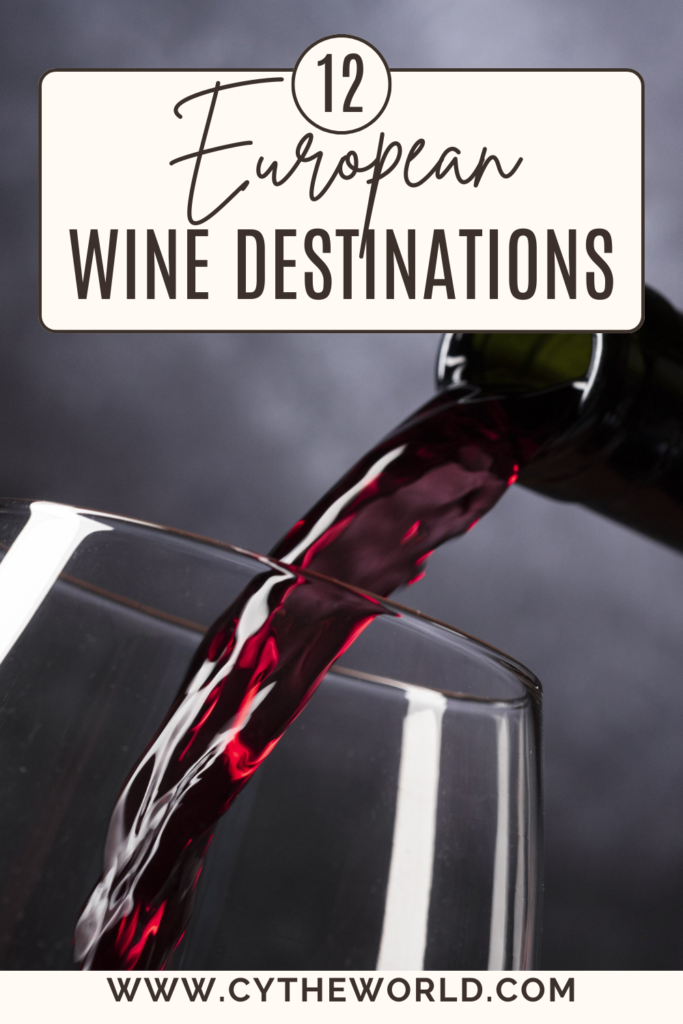
In Alba, you have access to the oldest truffle fair, which takes place in October and November. During this fall festival, you can stroll through the World Truffle Market event and taste the best of Piedmont. You will eat the certified truffles. The event will last for nine weeks, providing you with ample time to savor this delicious Piedmont treat. When it comes to winetastings, Piedmont offers some of the most unique experiences. Vineyards offer cellar tours, allowing visitors to learn about the intricate processes of wine production. You can delve into the art of winemaking, from harvesting the grapes to the fermentation and aging processes. These tours guide you through the winemaking process and often conclude with tastings, where guests can savor the flavors of different vintages while taking in the breathtaking views of the surrounding countryside.
A highlight of visiting Piedmont in the autumn is the opportunity to pair wine tastings with fresh truffle dishes, as the region is home to some of the finest white truffles in the world, hence the World Truffle Festival. In Turin, you can go on a Wine and Cheese Tour. The tour lasts 7 hours and includes a professional driver, providing an authentic experience of this wine region and its culinary delights. For Moscato lovers like me, visiting Asti is a must. You also get tours led by a guided winemaker, learning lessons from a connoisseur. In conclusion, a wine tour in Piedmont offers not only a deep appreciation for its historical winemaking but also a chance to indulge in the unique culinary experiences that accompany it. With its stunning landscapes, charming towns, and exquisite wines, Piedmont remains a premier destination for those seeking to explore the art of winemaking.
- Douro Valley, Portugal – River of Wine
Next, let’s head to Portugal! Portugal, like its neighboring countries, has a direct link to the Roman formative role in viticulture. Whenever the Romans gained land, they established vineyards. Their winegrowing spread from Alentejo to the Douro Valley. In the 17th century, the Portuguese wine economy experienced a boom as the English began to demand it. Since the sea journey to export the wine was long, winemakers started fortifying the wine with brandy, which led to the creation of Port Wine in the Douro Valley. Portugal is home to over 200 indigenous grape varieties, offering wine varieties that are not found anywhere else in the world. Hence, the reason why wine lovers should visit Portugal is to experience wines you will not find anywhere else. Portugal is also home to the most unique vineyards, giving you an unmatched experience in its vineyards that you will not be able to compare to anywhere else. However, you will find wineries around the country. One not-to-miss wine destination while in Portugal is the Douro Valley.
Visiting the Douro Valley for a wine tour is an experience that combines breathtaking landscapes, rich cultural heritage, and, of course, world-class wine. Nestled in northern Portugal, the Douro Valley is renowned as the world’s oldest wine region. People celebrate the region particularly for its exquisite Port wine. The valley’s terraced vineyards, set against the backdrop of dramatic river views, create a picturesque setting that is perfect for exploration. Hence, it is designated as a UNESCO World Heritage Site. It encompasses charming chapels, small mountains, and villages, making a visit to the region an exciting and relaxing experience. One of the best ways to immerse yourself in this stunning region is by taking a scenic cruise along the Douro River.
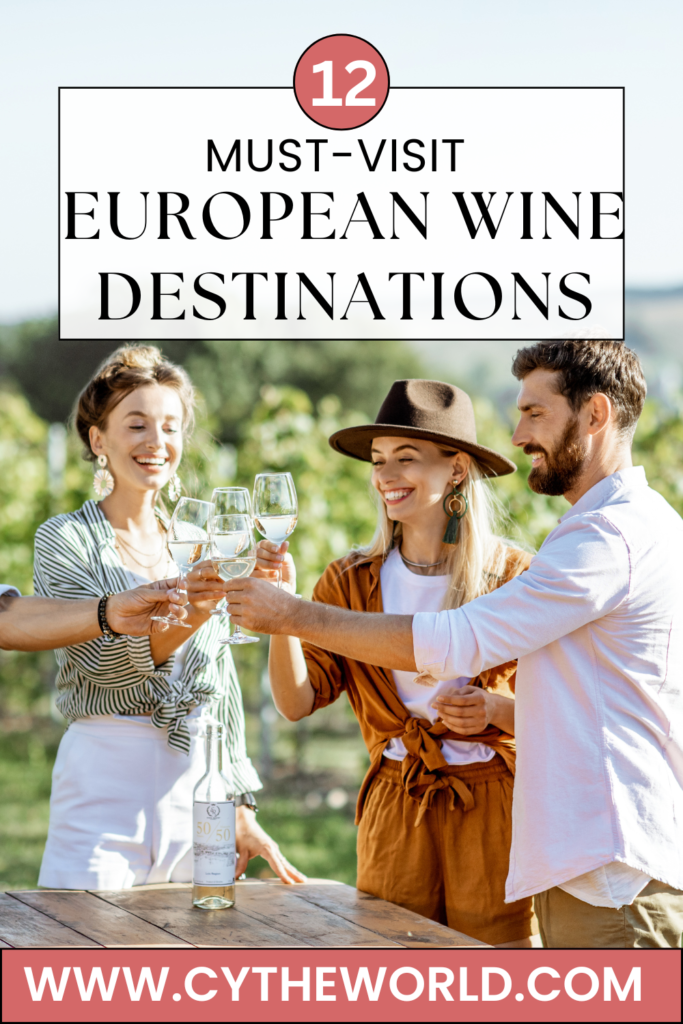
As you glide through the calm waters, you’ll be captivated by the terraced vineyards cascading down the hillsides, dotted with charming quintas—traditional wine estates. Many of these quintas offer immersive stays, allowing visitors to fully engage in the winemaking process. While residing at a quinta, you can indulge in wine tastings right on the estate, exploring the distinct flavors of both Port and dry reds exclusive to the region. One place to stop is the Vila Nova de Gaia. You will find the cellars where the Port wine is produced. The climate in Gaia makes it an ideal location for aging wine. You can tour the wine cellars, and some houses offer wine tasting paired with food, giving you an exquisite experience.
In the town of Peso da Régua, visitors can further enhance their wine knowledge by sampling a variety of local wines at various wine cellars. The interactive sessions typically include guided tastings, during which experts share the fascinating stories behind each bottle and the unique terroir that influences the region’s wines. For those seeking adventure beyond wine, hiking and biking trails through the vineyards offer an exhilarating way to appreciate the valley’s natural beauty. Ultimately, a wine tour in the Douro Valley is not only about savoring exquisite wines but also about connecting with the history and culture of this enchanting region. Whether you’re on a leisurely river cruise or engaging in a lively tasting session, the Douro Valley promises a memorable experience for every wine lover.
- Rioja, Spain – A Modern Twist on Tradition
Spain is a top European travel destination for many reasons. If you love art, architecture, being by the sea, and enjoying rural life, Spain has something for every traveler. Wine lovers will find that Spain has a space for them. Wine history in Spain dates back to the Phoenicians, who arrived in 1100 BC. However, although historians attribute the origin of wine to around 1100 BC, Spain’s vines have been cultivated since around 3000 BC. When the Romans expanded their territories in Spain, they started planting even more vines and brought new viticulture practices. In the 16th and 17th centuries, wine was produced throughout the Northern and Central regions of Spain. One destination that shaped Spain’s wine history is Rioja.
Rioja’s winemaking history dates back centuries, deeply rooted in the region’s favorable climate and fertile soil. The area boasts a rich heritage, with vineyards dating back to the Roman era, and it has since evolved into a symbol of Spanish wine culture. In 1860, it founded the first bodegas, introducing a new technology for storing wine. It is home to 500 wineries and is internationally renowned for its wines. Touring the vineyards in Rioja, Spain, offers a remarkable blend of tradition and modernity that captivates wine enthusiasts and casual travelers alike. Renowned for its bold Tempranillo wines, a visit to Rioja allows one to explore this rich tapestry of history, taste world-class wines, and witness the innovative techniques employed by contemporary winemakers. One of the most enjoyable activities is wine tasting in the region’s unique underground cellar caves.
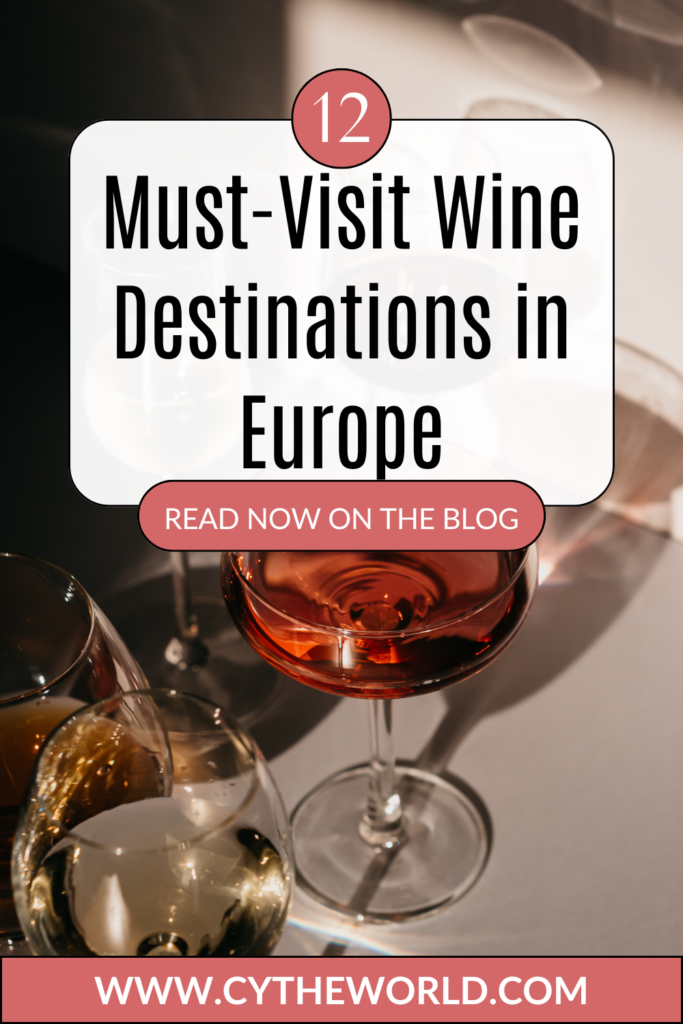
These ancient cellars, carved from rock and designed to maintain optimal conditions for aging wine, offer an immersive experience. Guests can savor a selection of the region’s prized wines while learning about the intricacies of the winemaking process, from grape selection to fermentation. Visitors can stroll among the vineyards, basking in the beautiful scenery. For those visiting during the summer, the Haro Wine Festival is a must-see event. This lively celebration, typically held in June, brings together locals and tourists for a weekend of wine, music, and cultural activities. Participants may even find themselves engaging in the traditional wine battle, where revelers splash each other with wine, embodying the festive spirit of the region. In essence, a tour of Rioja’s vineyards promises a delightful immersion into the world of wine, offering a perfect blend of history, culture, and community celebration.
- La Rioja Alavesa, Spain – A Basque Twist on Rioja
La Rioja is a vast wine region that includes three sub-regions. One of its sub-regions is La Rioja Alavesa. It is situated in the northern part of La Rioja. Its soil is rich in limestone and clay, and its wines are known for their higher acidity. Alavesa presents a harmonious blend of ancient winemaking traditions and modern architectural marvels, making it an essential destination for wine lovers and tourists alike. La Rioja Alavesa is renowned for its exceptional wines, particularly red varietals crafted from Tempranillo grapes. Today, La Rioja Alavesa marries time-honored methods with innovative practices, resulting in wines that reflect both tradition and contemporary flair. One of the highlights of visiting La Rioja Alavesa is the opportunity to stay at the iconic Hotel Marqués de Riscal, designed by the renowned architect Frank Gehry.
The striking structure, with its undulating shapes and vibrant colors, is a testament to modern design and serves as a luxurious base for exploring the region. The hotel is surrounded by vineyards, offering stunning views and a perfect environment to savor the local wines. Another architectural masterpiece in the area is Bodegas Ysios, which stands as a testament to the innovative spirit of Rioja. With its striking design that harmonizes with the surrounding hills, this winery provides guided tours that showcase both its architectural brilliance and the winemaking process. Wine enthusiasts can delight in tasting experiences that go beyond the usual offerings. You may take an electric wine buggy and lose yourself in this vineyard. On the estate, you will have access to the prestigious Las Naves wine.
Moreover, wineries in the region feature centuries-old caves, where traditional winemaking practices continue. Here, visitors can sample exquisite wines that have been aged for years in these historic cellars, gaining insight into the craftsmanship that defines La Rioja Alavesa’s winemaking legacy. For those looking to immerse themselves in the local culture, participating in a grape-stomping workshop during the harvest season is a unique and engaging experience. This time-honored tradition not only allows visitors to engage physically in the winemaking process but also fosters a deeper appreciation for the artistry involved in producing exceptional wines. La Rioja Alavesa is a destination that beautifully encapsulates the rich history of wine production in Spain while offering modern luxuries and memorable activities for tourists. Whether you are exploring ancient caves, staying at an architectural gem, or stomping grapes alongside local vintners, the region promises an unforgettable experience steeped in the warmth of Basque hospitality.
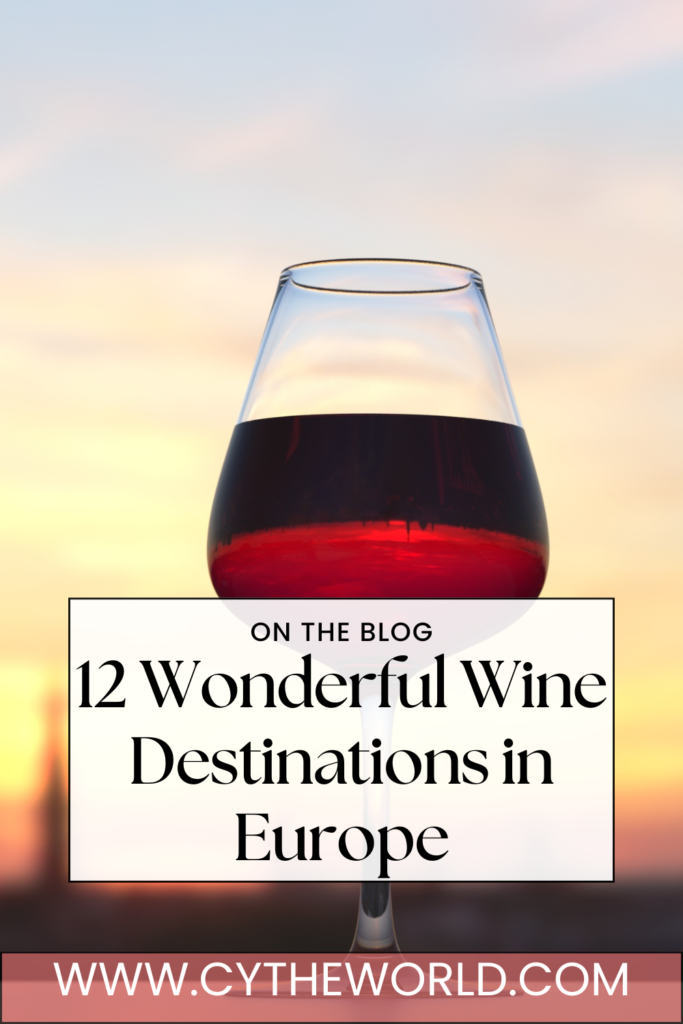
- Wachau Valley, Austria – Rieslings & River Views
One dream destination that comes to mind when I think of visiting Austria is Vienna. I always dreamt of a Christmas in Vienna. However, through researching wine destinations, I discovered that Austria also boasts a rich wine history, providing me with another reason to visit the country. Like its European counterparts, grapevines existed in Austria for more than 60 million years, meaning it has a vast history in viticulture. One of the places that holds much of this history is around the Danube River. In the 15th and 16th centuries, vineyards reached their highest levels, and vineyards were lined up from the river to the state of Upper Austria. Although viticulture had its ups and downs in the countries due to war and power turnovers, this region has been able to continue the longstanding Austrian wine culture. One spot that is a must-visit destination for wine lovers in Austria is the Wachau Valley.
A visit to the Wachau Valley is what I picture when I think of a relaxing vacation. The Wachau Valley in Austria is a hidden gem for wine enthusiasts, renowned for its breathtaking landscapes and exceptional Rieslings and Grüner Veltliners. Also a UNESCO World Heritage Site, it is situated along a picturesque stretch of the Danube River. It offers not only scenic beauty but also a rich history and a deep-rooted tradition of winemaking. The valley’s winemaking history dates back to Roman times, when vine cultivation began on the terraces that line the riverbanks. Over centuries, local vintners have refined their craft, utilizing the region’s unique microclimate and diverse soils to produce some of the finest wines in the world. Its steep vineyards, often terraced, provide optimal sun exposure while the Danube moderates temperatures, contributing to the complexity and flavor of the wines.
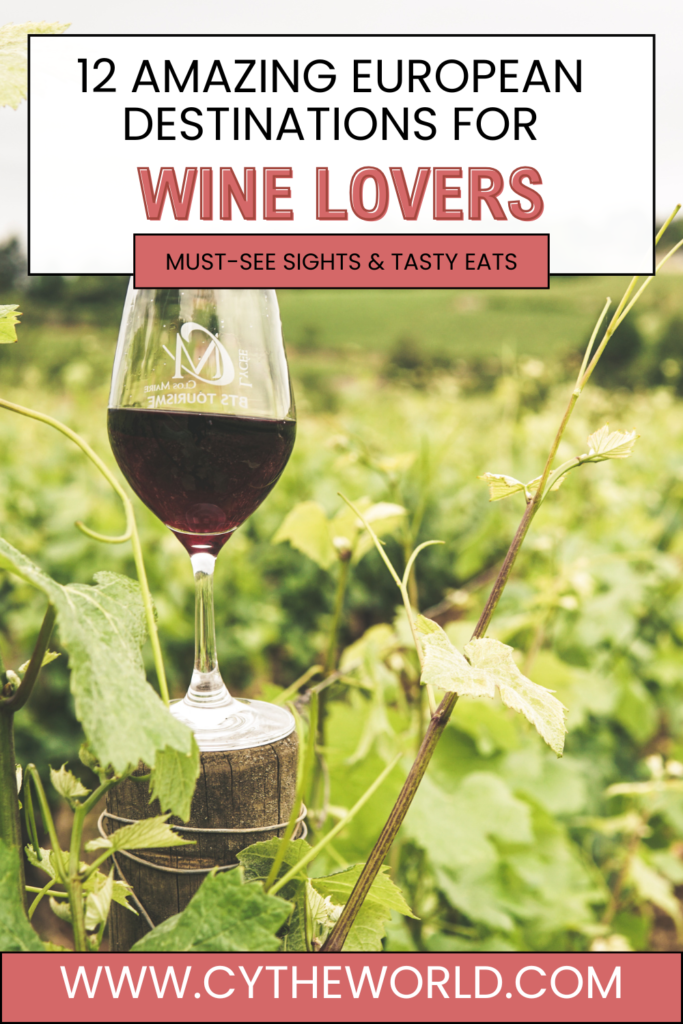
For wine enthusiasts, the Wachau Valley offers a wealth of activities that celebrate both its rich heritage and its diverse offerings. One of the most enjoyable ways to experience the valley is by cycling along the Danube Wine Trail, where visitors can take in the stunning river views and lush vineyards. This 180-kilometer route offers a leisurely exploration, dotted with quaint villages that showcase the local culture and hospitality. The valley features castles, historic towns, and vineyards that line the river as it flows through them, offering numerous attractions to visit during your adventure in the region. It is also home to the renowned Wachau apricots and numerous taverns that provide the perfect setting to enjoy the region’s wine paired with delicious, homemade Austrian specialties. While in this area, one of the must-visit places is the Stift Melk Castle. The castle is one of the most significant and beautiful European Baroque monuments, allowing visitors to immerse themselves in its magnificent surroundings.
A visit to the charming town of Dürnstein is a must. The ancient city seamlessly blends natural beauty with medieval architecture, featuring the ruins of a castle that once held Richard the Lionheart captive, as well as historic vineyards. Its picturesque landscape provides a backdrop for delightful wine tastings at hillside vineyards. Guests can sample the local varietals while enjoying panoramic views of the river that have inspired poets and artists for generations. In addition to wine tasting, there are numerous hiking opportunities, boat tours along the Danube, and the chance to savor the region’s culinary delights, which showcase the valley’s rich agricultural produce. Embracing both heritage and innovation, the Wachau Valley presents an unforgettable experience for any wine lover eager to explore one of Austria’s finest wine regions.
- Mosel Valley, Germany – Where Riesling Reigns
Another valley to consider when it comes to European wine destinations is the Mosel Valley in Germany. Although Germany is famous for its beer, in this region, wine is supreme. Mosel Valley is a picturesque destination renowned for its stunning landscapes, rich history, and exceptional wines, particularly the exquisite Riesling. The enchanting region, with its steep vineyards that cling dramatically to the hillsides, beckons travelers with its fairy-tale castles and the serene flow of the Mosel River. Its landscape, including Roman ruins, medieval castles, riverside towns with cobblestone streets, half-timber houses, and vineyards, makes it an exceptional destination for many travelers. For wine enthusiasts and nature lovers alike, the Mosel Valley is a must-visit destination that encapsulates the charm and beauty of German viticulture.
Like its European counterparts, its wine history dates back to Roman times. Vineyards in this region cover thousands of acres, offering visitors numerous opportunities to explore the extensive viticulture in the area. It is home to the largest Riesling crop in the world, and, along with the vineyards in the Rhine, produces 70% of German wine. It is also the oldest wine region in Germany. No visit to the Mosel Valley would be complete without tasting its renowned Rieslings. The area is home to a multitude of Weinguts (wineries), where visitors can sample award-winning wines crafted from the local grapes. Guided tastings at these establishments provide insight into the winemaking process and the unique terroir of the Mosel Valley. As you sip on the refreshing, crisp whites that this area is famous for, you’ll gain a deeper appreciation for the passion and dedication that go into producing each bottle.
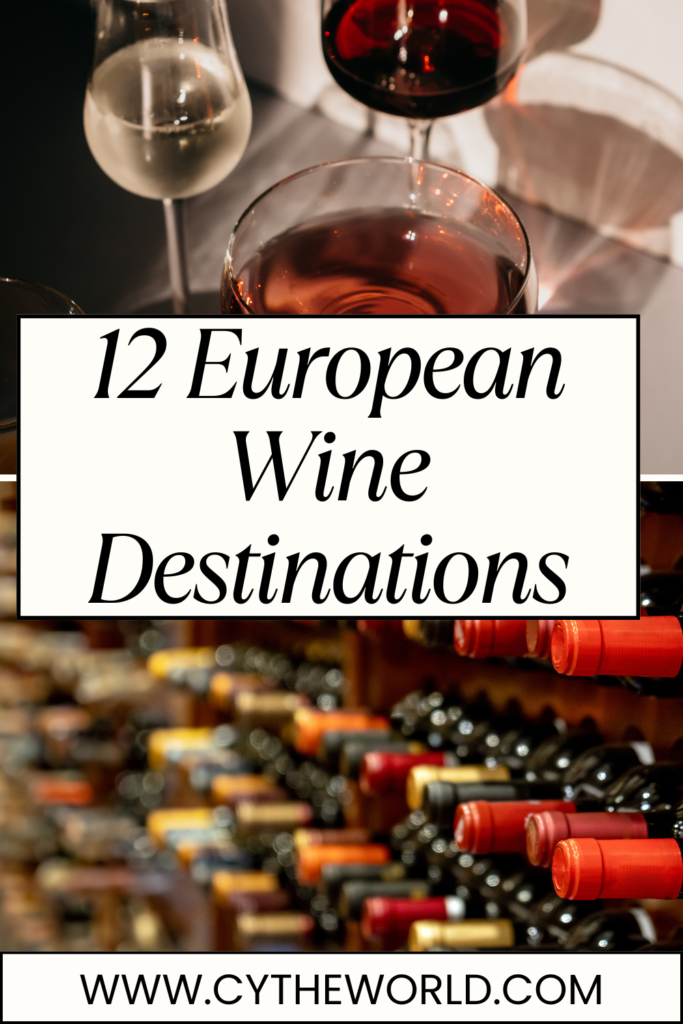
One of the best ways to experience the Mosel Valley is by embarking on a riverboat wine cruise. Departing from charming towns such as Cochem or Bernkastell-Kues, these cruises offer a unique perspective of the valley’s breathtaking scenery. Onboard, passengers can savor local wines while gliding past terraced vineyards, quaint villages, and majestic castles perched atop the hills, such as the Burg Reichsburg. The experience combines relaxation with the opportunity to learn about the region’s history and winemaking traditions, making it an unforgettable journey. For those who prefer a more active approach, hiking through the terraced vineyards is an exhilarating option. The Mosel Valley features an extensive network of walking trails that traverse its wine-producing areas.
Hikers can enjoy sweeping views of the river and landscapes dotted with vines, all while immersing themselves in the region’s natural beauty. The gentle slopes and well-maintained paths are accessible to all skill levels, making it a perfect choice for families or solo adventures. Whether you choose to cruise along the river, hike through the vineyards, or indulge in the delightful Rieslings, the Mosel Valley promises an experience that is both memorable and magical. In summary, the Mosel Valley is a captivating blend of natural beauty, rich history, and winemaking excellence.
- Santorini, Greece – Volcanic Vines by the Sea
One of my famous European destinations is Greece. I visited Thessaloniki in 2023 and fell in love with everything Greek. Thus, I would love to visit again, and my dream Greek destination is Santorini. As an ocean lover, Santorini offers me everything I need for a fabulous and relaxing vacation. Characterized by turquoise waters, multicolored cliffs, hot sand, and delicious cuisine, Santorini is the perfect destination for travelers seeking to relax and unwind. It is also celebrated for its distinctive winemaking heritage.
The island’s volcanic soil, shaped by ancient eruptions, lends itself to distinctive grape varieties, particularly Assyrtiko, which has become synonymous with Santorini’s wine production. The history of viticulture on the island dates back over 3,500 years, making it one of the world’s oldest winemaking regions. The volcanic landscape, with its mineral-rich soil and microclimates, contributes to the complexity and intensity of the wines produced here. Santorini’s winemaking tradition is deeply intertwined with its culture and economy. The island’s unique basket-style vine training, known as “kouloura,” plays a crucial role in protecting the grapes from the strong winds and harsh sun. This ancient technique not only helps to retain moisture but also allows the grapes to ripen gradually, resulting in exceptional quality. The dominant grape variety, Assyrtiko, is renowned for its acidity, minerality, and citrus flavors, making it an ideal companion for fresh seafood dishes that are staples of the local cuisine.
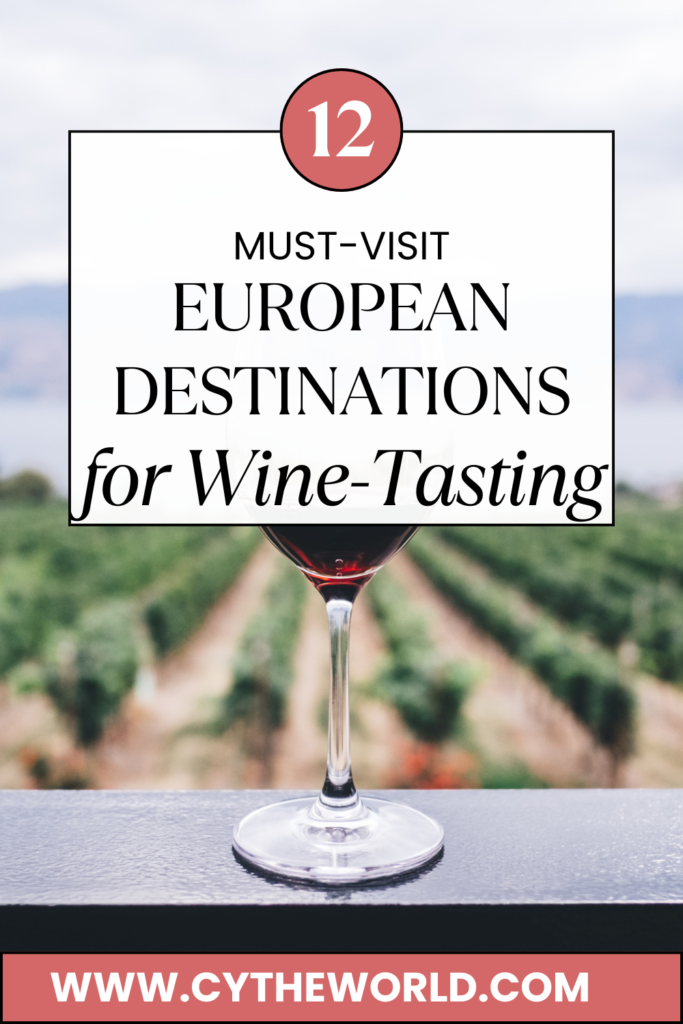
For tourists, wine tours in Santorini offer an immersive experience into this vibrant winemaking culture. One of the highlights is a visit to renowned wineries like Santo Wines, which boasts spectacular views of the caldera while guests sip on exceptional wines. Tourists can partake in guided tours that delve into the winemaking process from vine to bottle, learn about the island’s unique terroir, and even participate in tastings that showcase a variety of wines, including the rich, sweet Vinsanto, a dessert wine made from sun-dried grapes. The experience is not just about tasting wine; it is also about soaking in the island’s natural beauty. Many tours are timed to coincide with sunset, allowing visitors to enjoy a glass of Vinsanto while watching the sky transform into a palette of oranges and purples over the Aegean Sea. This picturesque setting, paired with the exquisite flavors of Santorini’s wines, creates a memorable experience that captures the essence of the island.
In summary, wine tours in Santorini are a must-do activity, offering a unique blend of history, culture, and stunning scenery. The island’s rich winemaking heritage, combined with its breathtaking landscapes, makes for an unforgettable journey into the heart of one of Greece’s most enchanting destinations. Whether you are a seasoned wine enthusiast or a casual visitor, Santorini’s volcanic vines by the sea invite everyone to sip, savor, and celebrate its unique flavors.
- Istria, Croatia – Adriatic Charm and Emerging Wines
Croatia has gained popularity as a budget-friendly travel destination. We previously highlighted it as a great European fall destination. Through research, I discovered another reason to travel to Croatia, and that reason is its wine production in the city of Istria. Istria is a captivating destination that seamlessly blends stunning Mediterranean landscapes with a rich tradition of winemaking. Nestled on the Adriatic coast, this beautiful peninsula has quietly emerged as a notable player in the world of wine, attracting those in search of both adventure and indulgence.
The history of wine production in Istria dates back over 2,000 years, with significant influence from the Romans, who appreciated the region’s favorable climate and fertile soil. Even today, Istria benefits from a Mediterranean climate, which provides an ideal environment for cultivating grape varietals such as Malvazija and Teran. These indigenous wines have garnered attention for their unique flavors that reflect the region’s terroir, making winery tours increasingly popular among travelers. Exploring Istria’s family-run wineries offers an immersive experience into the local culture and its time-honored craft. Visitors can wander through sun-drenched vineyards, learn about sustainable farming practices, and taste exquisite wines directly from the source.
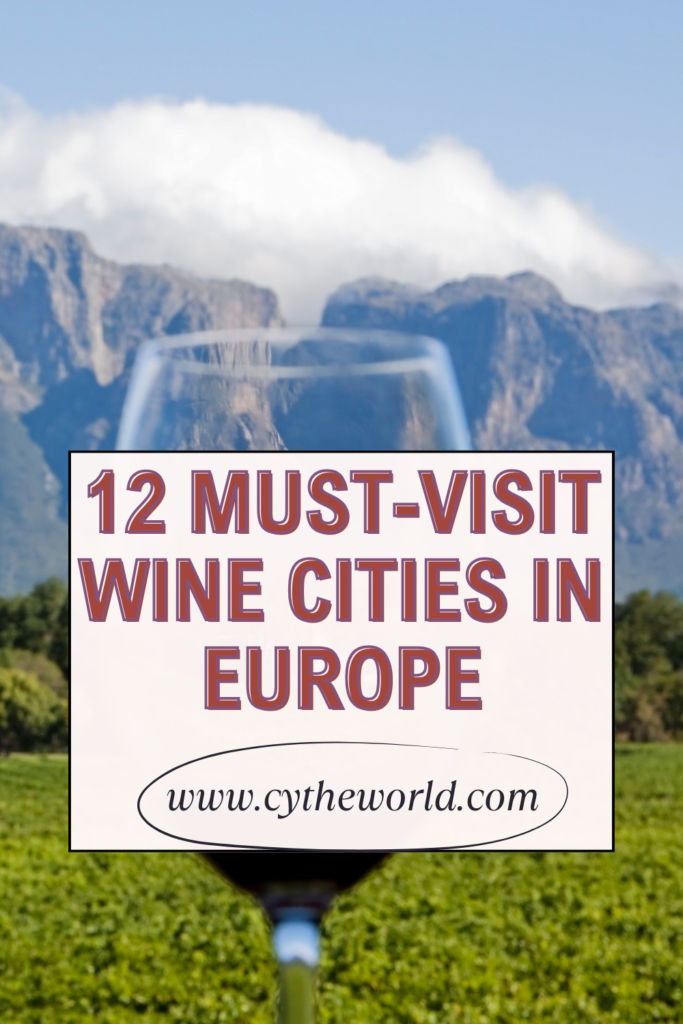
Notable wineries, such as the renowned Kozlović and Clai, invite guests to discover the intricacies of winemaking while enjoying breathtaking views of rolling hills dotted with grapevines. Wine tasting sessions often include pairing recommendations, showcasing not only the wines but also local cheeses and cured meats. In addition to wine exploration, Istria boasts a variety of activities that enhance the overall experience of this enchanting region. Food enthusiasts can participate in olive oil and wine pairing sessions, where the robust flavors of Istrian olive oil beautifully complement the region’s diverse wines.
For those seeking cultural immersion, a visit to the hilltop town of Motovun is a must. Known for its medieval architecture and panoramic views of the surrounding vineyards, Motovun offers a picturesque setting for strolls, gourmet dining, and exploration of truffle hunting, a local delicacy. In conclusion, Istria is a hidden gem on the Adriatic coast that invites visitors to savor its exceptional wines, experience its rich history, and indulge in its stunning landscapes. Whether you are a wine aficionado or an adventurous traveler, Istria promises an unforgettable journey into the heart of Croatian winemaking and culture.
- Provence, France – Rosé and Romance
Lastly, let’s head back to France. Another French destination to add to your wine destination is Provence. Nestled in the south of France, Provence is a captivating region renowned for its picturesque landscapes, rich history, and, most notably, its exquisite rosé wines. The sun-drenched vineyards, sprawling lavender fields, and charming villages make it an idyllic destination for those seeking relaxation and romance. The history of wine production in Provence dates back over 2,600 years, making it one of the world’s oldest wine regions. The Greeks first introduced viticulture to the area, followed by the Romans, who expanded the vineyards and refined the winemaking process.
Today, Provence is particularly celebrated for its delicate rosés, which account for a significant portion of its wine production. The unique terroir—comprising sun-soaked hillsides, Mediterranean breezes, and diverse soil types—contributes to the exceptional quality and flavor profiles of the wines produced here. For wine enthusiasts, Province offers a wealth of activities that showcase its rich vinous heritage. A must-do is hopping between the numerous vineyards located near Aix-en-Provence.
Each vineyard has its own story and distinct approach to winemaking. Tastings often pair the light, fruity rosés with local cheeses and charcuterie, allowing visitors to savor the harmonious flavors of the region. One particularly luxurious experience is visiting Château de Berne, a stunning winery that blends wine production with wellness. Here, guests can indulge in wine tastings, gourmet dining, and rejuvenating spa treatments, all set amidst the scenic beauty of sprawling vineyards and fragrant gardens. Beyond wine, travelers can immerse themselves in the art and culture of Provence.
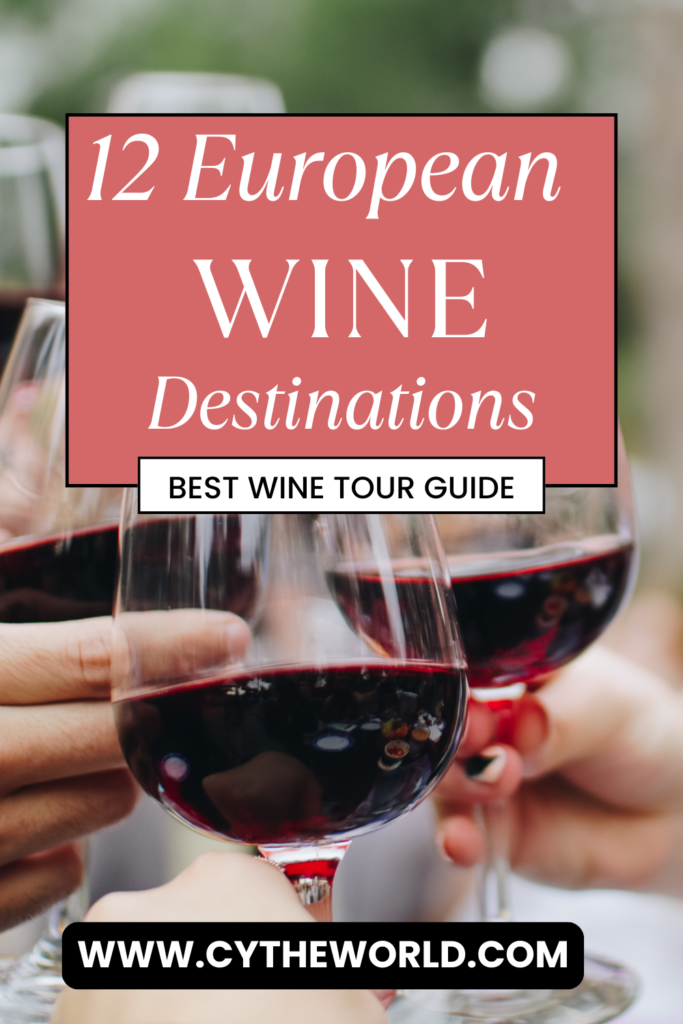
The region boasts vineyard sculpture parks, where art and nature intertwine. Enjoy leisurely walks through these parks while sipping on your wine and admiring the creative installations scattered throughout the grounds. Moreover, the vibrant local markets offer opportunities to savor traditional Provençal cuisine, from ratatouille to tapenade, which pairs perfectly with the beloved rosé. The magic of Provence lies not just in its wines but in the entire experience: the sun-drenched days, the scent of lavender in the air, and the rich cultural tapestry that makes this region a true French gem. For anyone seeking a blend of beauty, history, and flavor, Provence promises an unforgettable journey.
Bonus Tips for Planning Your Wine Getaway:
Planning a wine getaway can be an exciting and enriching experience, especially if you know the best times to visit and what to include in your itinerary. From late spring to harvest season, from August to October, is often considered the ideal time for a wine trip. During this period, vineyards are abuzz with activity and flavor, offering visitors the richest wine experiences available. One of the highlights of any wine getaway is the chance to attend local wine festivals. These events are a fantastic way to immerse yourself in the local wine culture while enjoying the vibrant atmosphere. Wine festivals typically offer a variety of tastings, food pairings, and educational opportunities. They are not only affordable but also incredibly fun, making them a must-visit during your trip. As you plan your adventure, keep in mind that many wineries are situated in remote areas. To fully enjoy the day without worrying about transportation, consider renting a car, booking a driver, or using a tour service. This way, you can indulge in tastings safely and make the most of your wine getaway.
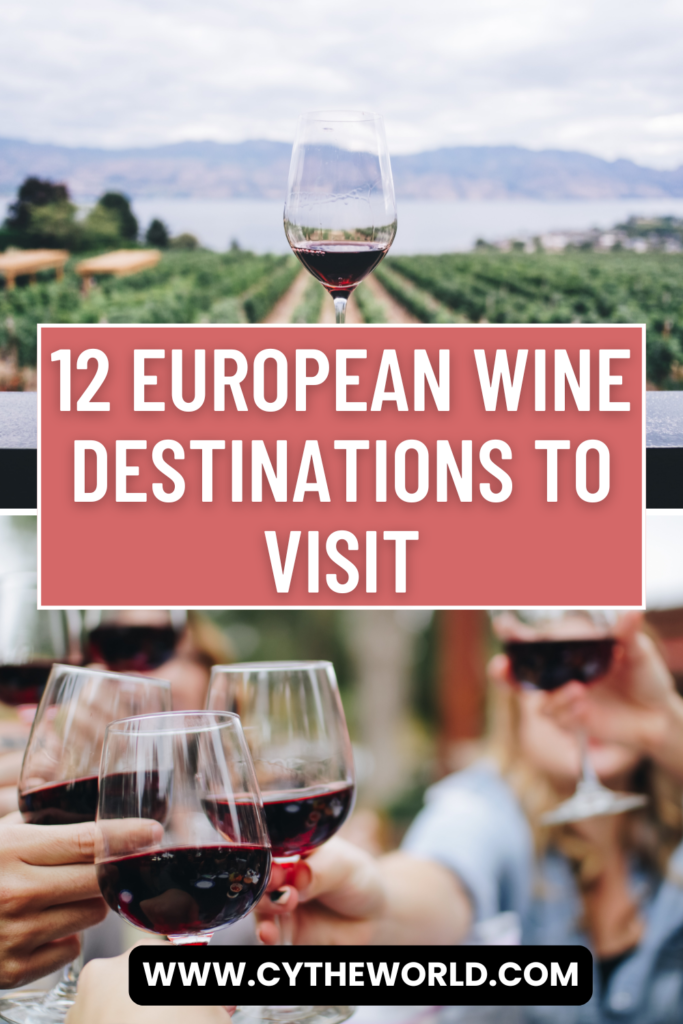
Conclusion
In conclusion, Europe is a treasure trove for wine enthusiasts, offering an array of experiences that cater to every taste and preference. From the enchanting chateaux of France, where rich reds and elegant whites tempt the palate, to the breathtaking cliffs of Greece that cradle unique varietals amidst stunning landscapes, each region provides its distinctive flavor and ambiance. Whether you are savoring a robust Bordeaux or enjoying a refreshing Prosecco by the sea, the memories created in these picturesque locales are bound to linger long after the last sip. Exploring Europe’s diverse wine regions is not just about the beverages themselves; it’s about immersing yourself in the culture, history, and breathtaking scenery that enhance every tasting experience. So, cheers to the journey of savoring every drop and creating unforgettable moments across the beautiful vineyards of Europe!
As always, thank you for reading. Please like, share, and subscribe to our mailing list for more destination highlights. Let us know which region you are dreaming of visiting first. Tell us in the comments!
Until next time, cheers!
xoxo,
Cy!
Leave a Reply
You must be logged in to post a comment.